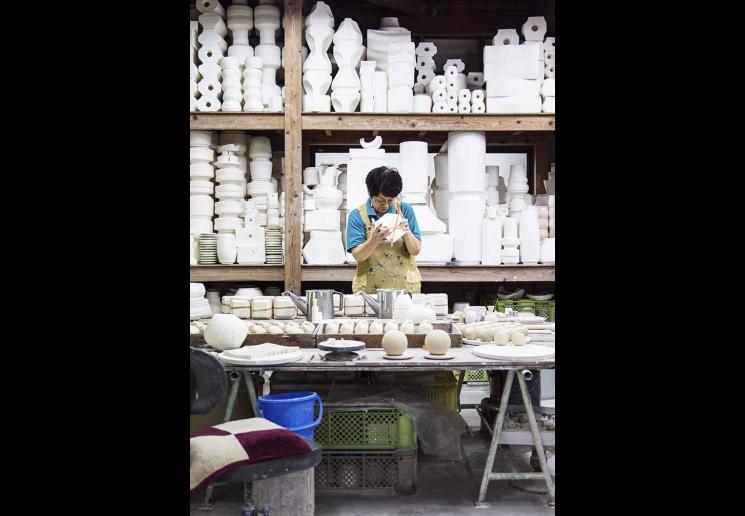FOR THE FIRST time in 400 years, an ancient Japanese ceramic tradition has been adopted by contemporary designers – the Dutch design duo Scholten & Baijings and Japanese designer Teruhiro Yanagihara have created a contemporary collection of Arita porcelain along with an elite group of designers in 2016/project.
The creative directors of this venture, Scholten & Baijings and Teruhiro Yanagihara, were asked by Saga prefecture (the province where Arita wares are made), to reshape the future of Arita porcelain to commemorate the cooperation and exchange between the creative industries of The Netherlands and Japan. Sixteen designers from Europe, America, and Japan worked with 10 porcelain companies to develop contemporary collections of the finest Japanese porcelain using ancient techniques, skills, and traditional practices.
Teruhiro Yanagihara established his design studio in 2002 and since then he has been creating designs for Japanese and international clients. He pushes boundaries with projects that combine contemporary design and Japanese crafts. Stefan Scholten and Carole Baijings founded their design studio in 2000 in Amsterdam and combine minimal forms and a balanced use of colour with traditional handicrafts and industrial production.
A concurrent exhibition of older Kakiemon porcelain can also be seen in the Asian Pavilion. Coloured Japanese porcelain first appeared circa 1660, imported by Dutch East India Company officials returning from the Far East and this exclusive and expensive porcelain type was highly desired by the Dutch elite. The form of porcelain originated in the southern Japanese town of Arita in the early 17th century when porcelain stone was found in the mountains around Arita. Kakiemon is considered the pinnacle of Japanese porcelain and production started around 1616 and has been continuously produced for generations by the Kakiemon family, it is named after master potter Sakaida Kakiemon (1596-1666). The 15th generation from the Kakiemon factory have created some new pieces especially for the Rijksmuseum to celebrate these two exhibitions. The new pieces are displayed alongside 17th-century Kakiemon porcelain from the Rijksmuseum’s collection. At 110 pieces, the Rijksmuseum has the largest collection of Kakiemon porcelain in the Netherlands.
Until 9 October at the Rijksmusuem, Amsterdam, www.rijksmuseum.nl







